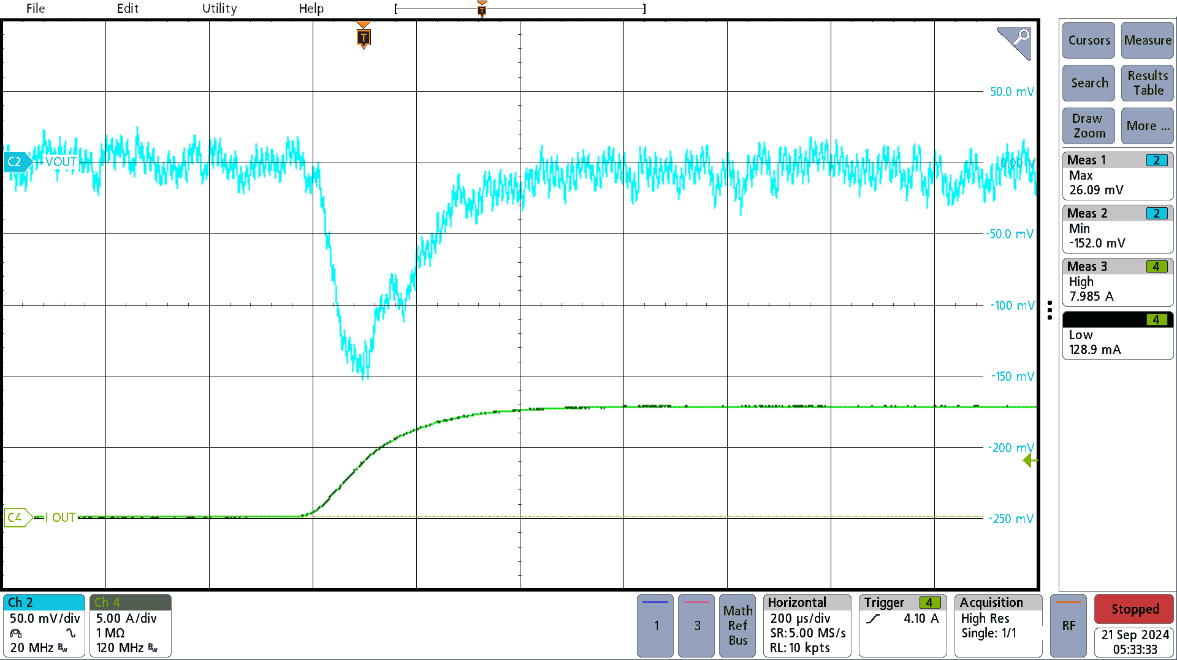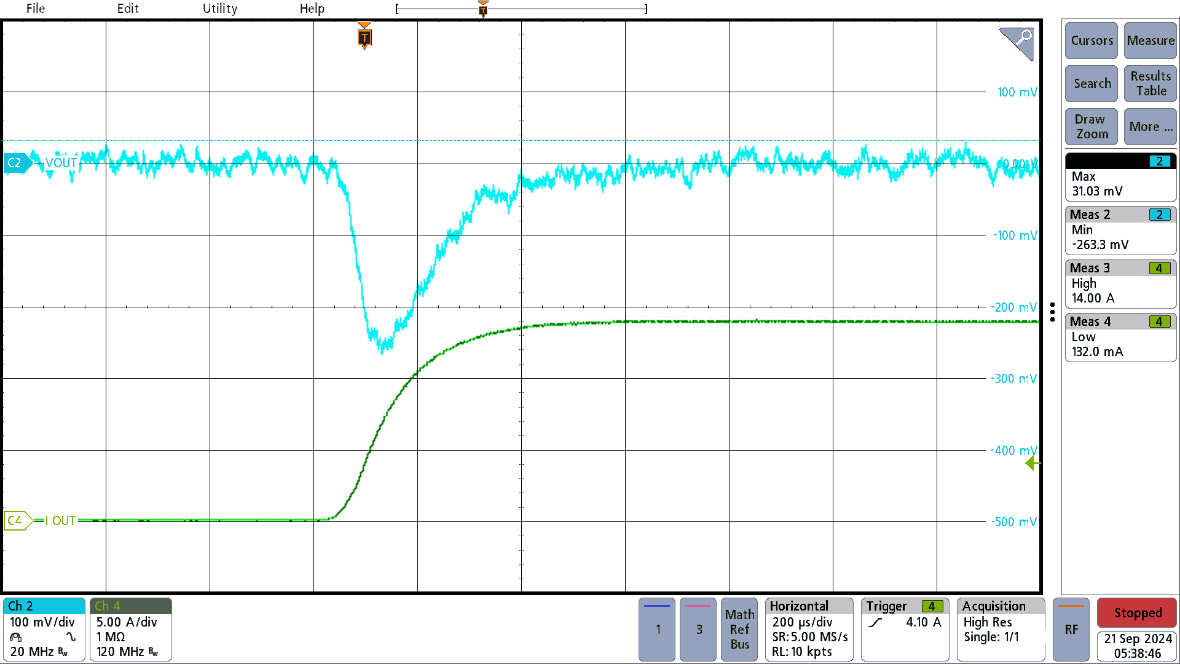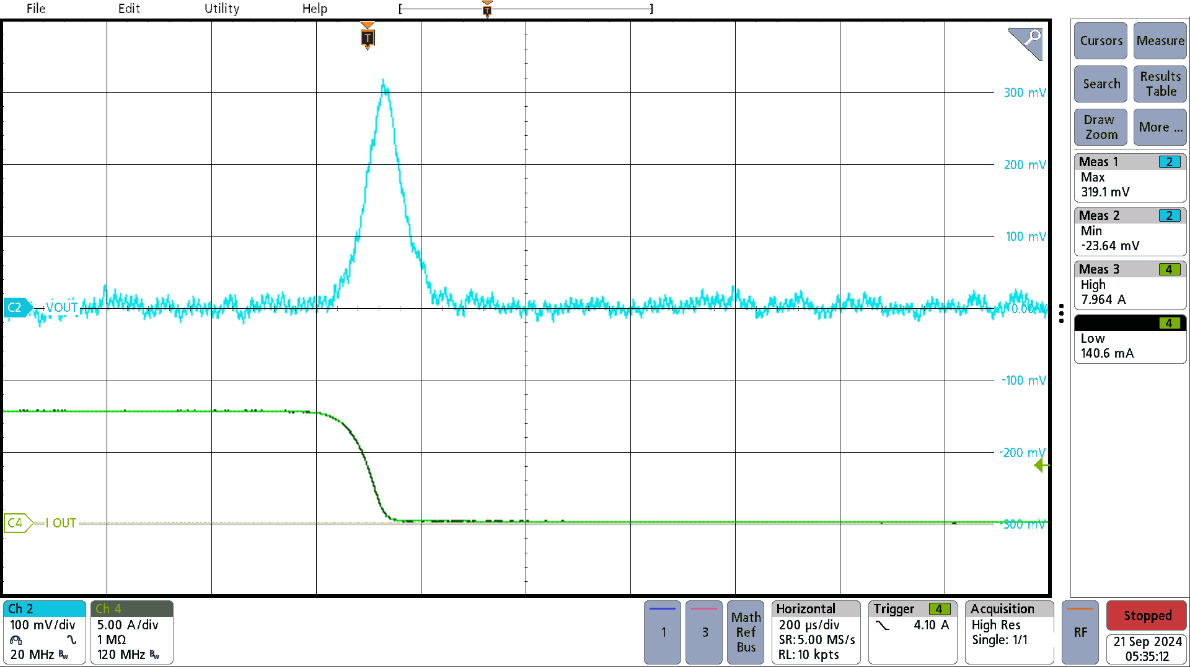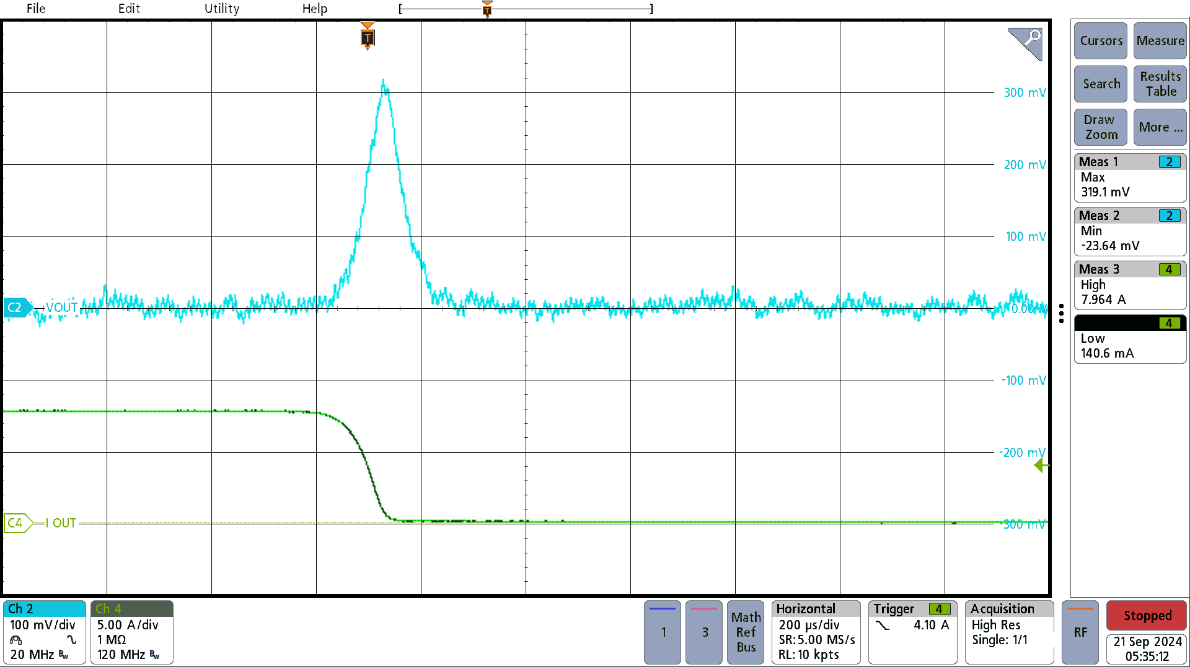TIDT412A October 2024 – November 2024
3.3 Load Transients
Figure 3-5 and Figure 3-6 show how the system responds to a load step from 0Ω to 2.5Ω where the input voltage is 48V, the output voltage is 20V and 35V respectively.
Figure 3-5, with a 20V output voltage, experiences an 8A increase in current as a load is applied, and this results in an undershoot of 150mV or 0.75%. Figure 3-6, with a 35V output voltage, experiences a 14A increase in current as a load is applied, and this results in an undershoot of 250mV or 0.7%.
 Figure 3-5 20VOUT, 2.5Ω Load Step
Figure 3-5 20VOUT, 2.5Ω Load Step Figure 3-6 35VOUT, 2.5Ω Load Step
Figure 3-6 35VOUT, 2.5Ω Load StepFigure 3-7 and Figure 3-8 show how the system responds to a load dump from 2.5Ω to 0Ω where the input voltage is 48V, and the output voltage is 20V and 35V respectively.
Figure 3-7, with a 20V output voltage, experiences an 8A decrease in current as the load is disconnected, and this results in an overshoot of 330mV or 1.65%. Figure 3-8, with a 35V output voltage, experiences a 14A decrease in current as the load is disconnected, and this results in an overshoot of 550mV or 1.57%.
 Figure 3-7 20VOUT, 2.5Ω Load Dump
Figure 3-7 20VOUT, 2.5Ω Load Dump Figure 3-8 35VOUT, 2.5Ω Load Dump
Figure 3-8 35VOUT, 2.5Ω Load Dump